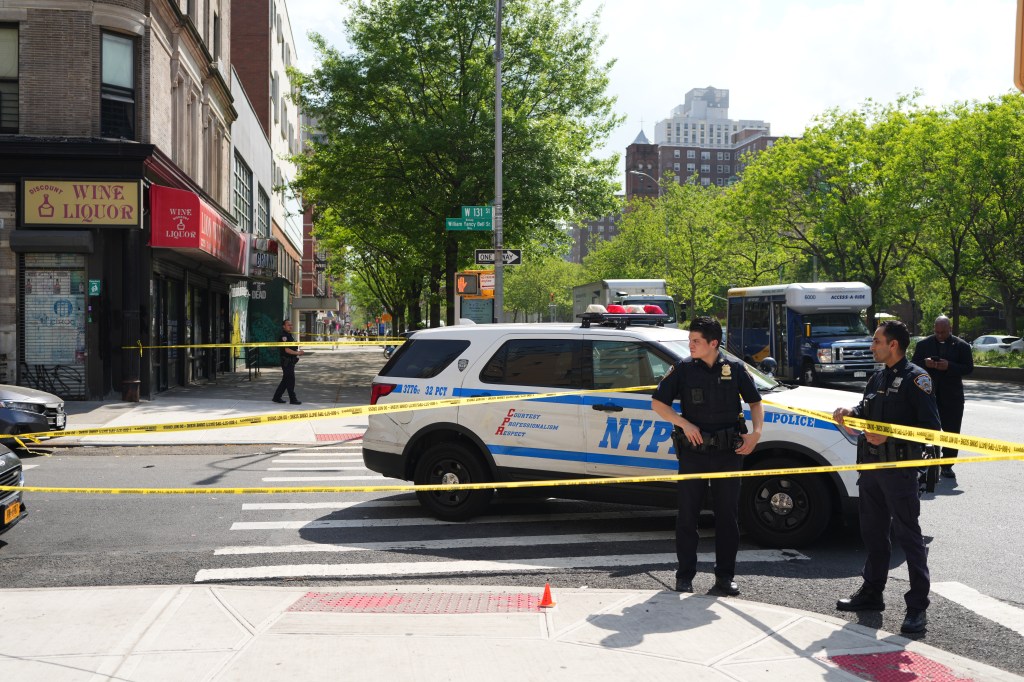Duh! Study shows ‘defund the police’ resulted in more killings
According to the , a police group that tracks crime levels, murders rose 44% from 2019 to 2021 across 70 of America’s largest cities.
But then something happened – big city murders fell dramatically from their peak from over 9,600 in 2021 to 6,900 in 2024 – a 39% decline.
What explains the dramatic rise and equally shocking reversal? Policing – first the lack thereof and then its return.
of 15 major cities including New York City, Chicago, Austin, Portland and Minneapolis found that murders spiked in the wake of the summer 2020 unrest as police pulled back – making fewer stops and arrests.
When policing rebounded in these cities, murders declined dramatically.
Across the 15 cities with a combined population of 27 million and a disproportion share of violent crime, police stops and arrests dropped 40% after May 2020, but have since risen –up 37% from their recent lows in 2021 and 2022.
Meanwhile, homicides fell 32% from their recent highs.
That more policing would cut crime is not only commonsense, it is borne out by showing reduces violent crime.
But our study finds recent murder declines are linked to a “re-policing effect.”
As arrests and stops rose, homicides declined rapidly.
Those cities where policing levels remain low, murder rates remain near highs.
Post-George Floyd de-policing – when demoralized, debilitated, and depleted police forces step back from aggressive anti-crime activities fearing political, professional, or personal consequences for doing their jobs – exacerbated the growing violent and serious crime problem.
The Defund The Police movement and the officials espousing anti-police sentiments sent a clear message to frontline officers: don’t bother.

Emboldened criminals stepped into the vacuum and mayhem ensued.
By 2021, the CDC recorded over nationwide – 7,000 “excess” killings compared to 2019 levels – and more than half of those additional homicides occurred in the 70 largest cities.
As the public recoiled at the growing carnage, many local and state officials who had previously supported the “Defund the Police” agenda and espoused anti-law enforcement sentiments reversed course while others met with electoral defeat.
These shifts in opinion and policy resulted in re-policing that empowered law enforcement to crack down on crime through proactive policing.
Cops began to make arrests and stops at increasing rates—and murders fell.
Big cities murders are back to 2019 totals – thanks to the police.
The Big Apple’s experience is telling. Murders rose 44% from May 2020 to February 2022 as .
When NYPD began to re-police – arrests climbed 95% from 2021 to 2024 — murders dropped.
Other big (and violent) cities saw the same effect. In New Orleans, which was slow to re-police, murders fell by half from their heights when stops and searches returned to Pre-Floyd levels.
Elsewhere, cities like Austin, Minneapolis, and Portland fully embraced ‘defund the police’ and the anti-cop rhetoric of 2020 and killings skyrocketed as police activity plummeted.
After experiencing eye-popping murder spikes, each city has pulled back from the brink.
The mayor of Portland has for police defunding while in Minneapolis voters rejected a ballot measure to abolish the police department in 2021.
Keep up with today’s most important news
Stay up on the very latest with Evening Update.
Thanks for signing up!
In those three jurisdictions, re-policing has been slower but steady and murders are falling but remain elevated – suggesting re-policing has a proportionate impact on homicides.
Outliers remain.
In Dallas and Philadelphia, arrests have ticked up as murders fell but killings had been rising prior to 2020.
In the city of Brotherly Love, homicides had risen by to 2019 after voters elected an anti-police mayor in 2016 and in 2017.
Dallas murders spiked 2019 after a Soros DA took office causing the governor to – twice – to quell the violence.
Baltimore is a peculiar case, having its “Floyd” moment five years prior to the summer of 2020 – and the resulting de-policing and homicide spike.
after the 2015 Freddie Gray incident and remained high for the next eight years.
Then the progressive prosecutor, Marilyn Mosby, was replaced by a tough-on-crime DA. As police arrests rose again in 2022, murder rates tumbled to .
Every one of the 15 cities has seen its homicide numbers drop since 2021—except Seattle.
It is also the only city that did not see any increase in police enforcement.
Seattle police make 60% fewer stops than they did in 2019 while the murder rate is 50% higher.
The city’s experience provides a useful, if tragic, counterfactual, which proves the impact of re-policing on murders.
After the disastrous and bloody Defund the Police experiment in de-policing, cops are back on the streets and murders are down.
The re-policing effect is real: more policing means less murder.
Jason Johnson, former deputy commissioner of the Baltimore Police Department, is the president of the Law Enforcement Legal Defense Fund (LELDF). Sean Kennedy is LELDF policy director.